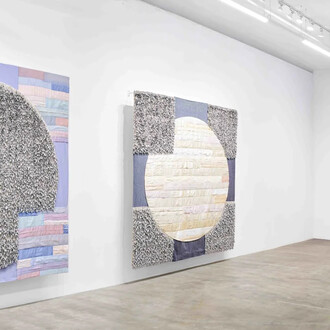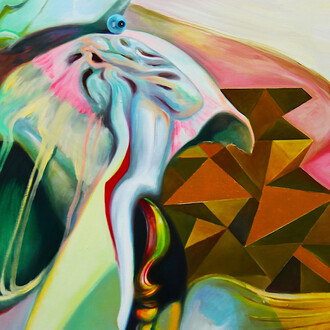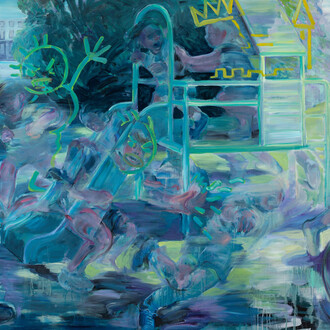The gallery is pleased to present Truth-telling, Renée Stout’s second solo exhibition with the gallery.
Stout journals constantly. Pages fill with informal doodles, notes, passing thoughts, small, intuitive marks, that serve as points of departure as she experiments with how a simple drawing might shift when translated into the language of painting and sculpture. Rather than hiding this process, she invites the viewer to witness it, to trace the progression from private sketch to public object, and to consider the evolving relationship between the two.
While not intended solely as political commentary, many of these works inevitably respond to the climate in which they are made. Especially as she resides in Washington D.C. In a cultural moment where some voices are denied or subsumed, where discourse often resembles shouting, Stout’s practice affirms the necessity of thoughtful expression and presence, and especially of truth-telling. One painting, The ugly truth, is a layered, chaotic composition that conveys some of the frustration and uncertainty of this moment. A sculpture entitled Truth telling kit, is a seemingly transportable cabinet that may be opened and used for the purposes of discerning truth-telling. Inside there are six compartments, several with an array of odd outdated equipment. One has a set of lower teeth.
Truth-telling as a speech activity emerged with Socrates as a distinct set of philosophical problems that revolves around four questions: who is able to tell the truth, about what, with what consequences, and with what relation to power. Truth-telling is at the core for Stout. What follows is integrity, generosity, understanding, and justice.
Stout’s Southern roots inform much of her creative practice, especially in her exploration of African American folklore, spiritual traditions, and the complex intersections of race, identity, and history. Her art is imbued with themes of healing, ritual, and the unseen forces that shape daily life, making the American South a vital space for her to explore the persistence of ancestral knowledge and spiritual practices that trace back to Africa. Through mixed-media works, sculptures, and installations, Stout invokes Southern traditions of hoodoo, African American folk magic, fortunetellers, and the healing power of Voodoo priests. Her approach blends personal narratives with broader cultural histories, highlighting how the American South serves as both a site of resilience and struggle for marginalized communities. As an important part of her long practice, she has assumed an alternate persona, a spiritualist and healer.
















